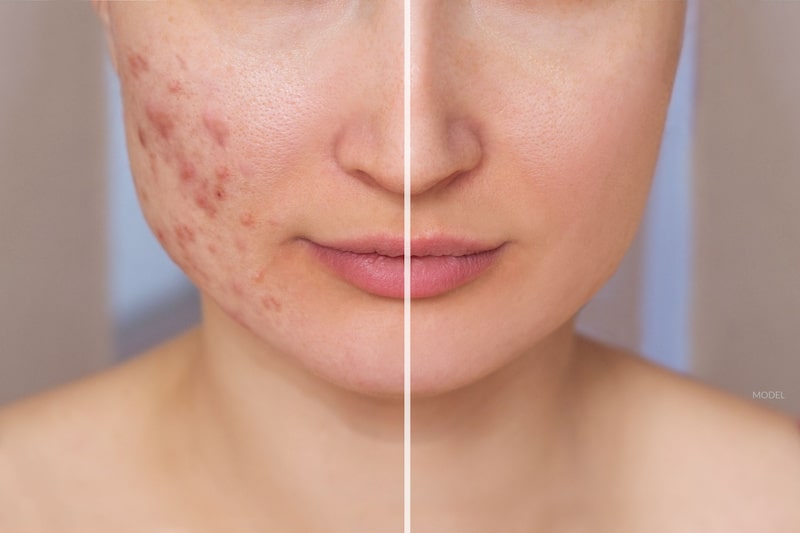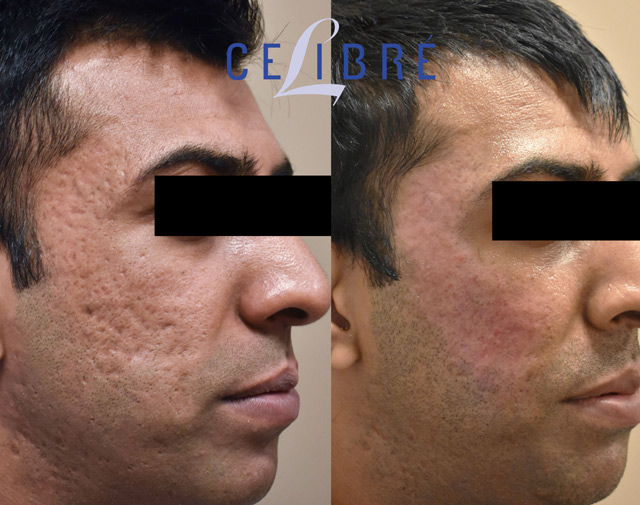Exploring Skin Problem: Treating and identifying Acne Scars for Healthier Skin
Acne marks represent a substantial concern for people looking for to maintain healthy and balanced skin, as they can affect both appearance and self-worth. Understanding the different kinds of scars, from atrophic to hypertrophic, is crucial for figuring out appropriate therapy options.
Recognizing Acne Scars
Comprehending acne marks is important for anyone that has actually experienced severe acne, as these marks can have an enduring influence on both physical appearance and mental well-being. When the skin undergoes inflammatory reactions during energetic acne sores, acne marks form. The extent of scarring is commonly influenced by elements such as the sort of acne, its period, and private skin attributes.
The body's all-natural healing procedure can cause either atrophic marks, which show up as clinical depressions in the skin, or hypertrophic scars, which are elevated and arise from overflow of collagen. In addition, the emotional toll of acne marks need to not be ignored; numerous individuals report feelings of embarrassment, stress and anxiety, and reduced self-confidence. This psychological burden can influence social interactions and overall lifestyle.
Resolving acne marks calls for a thorough understanding of their development and effect. Awareness of the capacity for long-term consequences connected with unattended marks can encourage individuals to seek ideal therapies. Early intervention and effective administration approaches can substantially boost skin appearance and enhance psychological strength, emphasizing the value of comprehending the complexities bordering acne marks.
Kinds Of Acne Marks
Acne marks can be classified into unique types, each showing unique qualities and requiring specific therapy techniques. The primary sorts of acne marks include atrophic, hypertrophic, and keloid marks.

Hypertrophic marks, on the other hand, are increased above the skin level and are the outcome of excessive collagen production throughout the recovery procedure. They usually remain within the boundaries of the original acne lesion. Keloid scars are similar however expand past the original injury site, developing larger, elevated areas that can be itchy or agonizing.
Understanding these sorts of scars is vital for choosing ideal therapy options. Different marks might react far better to details treatments, such as laser therapies, fillers, or medical treatments, stressing the significance of a customized technique to acne mark monitoring.
Identifying Your Marks
When evaluating the look of your skin, it is critical to properly recognize the sort of marks present, as this will inform one of the most efficient treatment strategy. Acne scars generally fall under 2 groups: hypertrophic and atrophic marks. Atrophic scars, which are the most usual, look like anxieties or impressions on the skin. These can better be identified into ice-pick scars, boxcar marks, and rolling scars, each exhibiting distinctive features and needing different approaches for analysis.
Hypertrophic scars, on the various other hand, are increased and take place due to too much collagen production throughout the healing process. Identifying the certain functions of your marks-- such as depth, texture, and width-- is vital for correct identification. Furthermore, take into consideration the distribution of marks across your skin, as this can indicate the extent and duration of the acne condition.
Involving with a dermatologist can give valuable understandings right into the nature of your scars, assisting in the differentiation between different kinds. A comprehensive understanding of your scars will inevitably lead to a more tailored and efficient therapy plan, making certain a clearer and healthier skin tone.
Treatment Alternatives Available
Determining the certain sort of acne scars existing on your skin lays the foundation for exploring efficient therapy alternatives. Typical sorts of acne marks include atrophic (clinically depressed), hypertrophic (raised), and post-inflammatory erythema.
For atrophic scars, choices such as chemical peels, microneedling, and laser resurfacing are extensively used. Chemical peels off utilize acids to remove the outer layer of skin, promoting brand-new cell growth.
Hypertrophic marks can be treated with corticosteroid shots to squash the scar or laser therapy to decrease soreness and boost look. acne treatment for sensitive skin. Silicone gel sheets and stress dressings might also assist in taking care of increased scars
In enhancement, facial fillers can briefly fill up in depressions from atrophic scars, while surgical excision might be proper for severe situations. Each therapy option has its advantages and considerations, making it necessary to talk to a dermatologist. They can supply tailored referrals based on the type and seriousness of your marks, in addition to your skin type and general health and wellness.
Tips for Avoidance
Reliable prevention approaches can dramatically lower the likelihood of developing acne scars. The very first step is to maintain a consistent skin care regimen that consists of gentle cleansing, exfoliation, and moisturizing. Utilizing non-comedogenic items helps prevent clogged pores, which can aggravate acne. In addition, integrating topical therapies having salicylic acid or benzoyl peroxide can efficiently take care image source of outbreaks and find this decrease swelling.
Preventing need to stand out or pick acne sores is critical, as this can bring about deeper skin damages and boost the danger of scarring. Rather, take into consideration utilizing a cool compress or over the counter treatments to reduce swelling and inflammation.
Sun protection is one more vital element of prevention; ultraviolet (UV) rays can darken marks and impede the recovery process. Applying a broad-spectrum sunscreen with at the very least SPF 30 daily can protect the skin and promote even healing.
Last but not least, preserving a well balanced diet rich in vitamins, anti-oxidants, and minerals supports skin health and recovery. Staying moisturized and taking care of stress and anxiety levels can likewise play a substantial role in lowering acne flare-ups. By implementing these strategies, people can considerably lessen their chances of establishing acne scars.

Final Thought
In final thought, understanding and identifying acne marks is necessary for reliable therapy and accomplishing healthier skin. Different types of acne scars, including atrophic and hypertrophic scars, look these up demand specific interventions tailored to private needs.
The body's all-natural healing procedure can result in either atrophic scars, which appear as anxieties in the skin, or hypertrophic scars, which are elevated and result from overproduction of collagen. They are further divided right into 3 subtypes: ice choice marks, boxcar scars, and rolling marks. Acne marks typically fall into 2 groups: atrophic and hypertrophic marks. These can even more be categorized into ice-pick marks, boxcar scars, and rolling scars, each showing unique qualities and needing different methods for assessment.
Various kinds of acne marks, including atrophic and hypertrophic scars, demand certain interventions tailored to specific requirements.